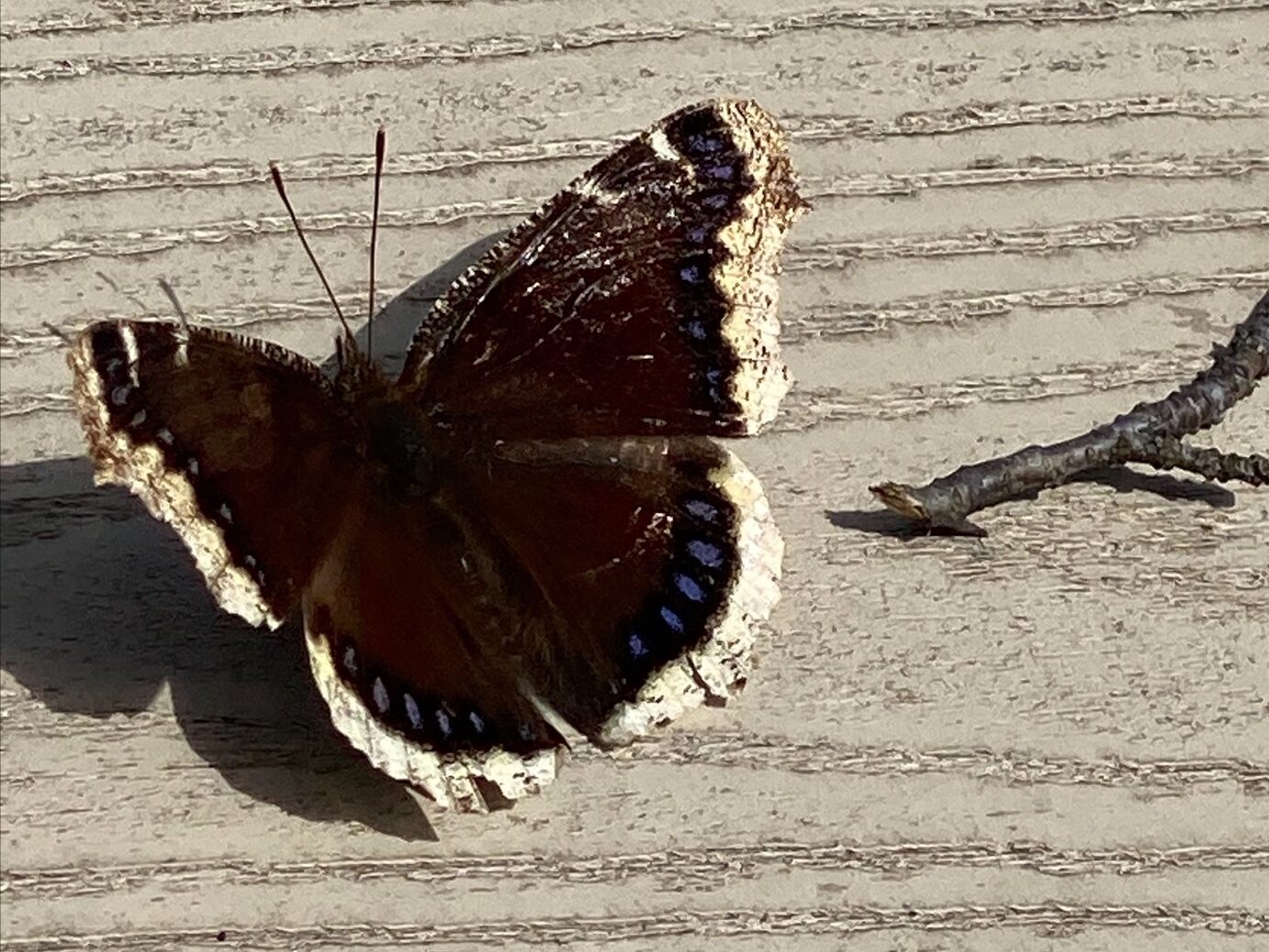
Photo credit: Seetal Sunga
Nadia Ouellette, Environment Committee
This time of year, many neighbours are vigilantly raking and disposing of leaves. Last November, our newsletter highlighted the benefits of leaving the leaves. The effort to remove leaves from your property is harmful to pollinators, but well-meaning people may not realize the harm they are inadvertently causing.
Here is an introduction to five highly-valued wildlife species you are inadvertently hurting when you dispose of your leaves.
- Fireflies – (Lampyris noctiluca)
- What a magical feeling to watch fireflies flashing in the dark. Sadly, their numbers are declining and habitat loss is one of the reasons. The larval stage of the firefly survives our winter under the leaves. According to firefly.org, when you rake up leaves and put them at the curb, you are throwing away fireflies. Let’s allow future generations to experience the sight of these amazing creatures.
- Mourning Cloak Butterfly – (Nymphalis antiopa)
- This beautiful butterfly is considered one of the first sights of spring, sometimes it can be seen before the snow has fully melted. They are unusual, as they spend the winter in their adult stage. During the cold months they are in a hibernating-like state, tucked away under fallen leaves or under the bark of a tree. You risk harming them when you throw away your leaves.
- Luna Moth – (Actias luna)
- These beautiful moths are some of the largest in North America and can be the size of an adult human’s hand. In northern climates, one generation is born every summer. The caterpillar grows into a pupa and the pupa forms a cocoon on the ground amongst the leaves.
- Woolly Bear – (Pyrrharctia isabella)
- The caterpillar stage of the Isabella Tiger Moth is an important part of our folklore. The length of the rusty brown colour on the caterpillar was used to predict the severity of the upcoming winter. There’s even a festival dedicated to them! They spend the cold winter under the leaves.
- Bumblebees – (Bombus)
- As fall and winter approaches, the matriarch bumblebee queen and the worker bees will begin to die of old age. The younger queen, who has newly mated, will survive the winter. This is the most precarious stage of their life cycle. Scientists still haven’t unlocked all of the bumblebees requirements for the winter and are still learning. This queen will burrow into the earth to survive our winter and a thick layer of leaves will help her to survive the cold.
Beyond the five species mentioned in this article, there are many other beautiful creatures that depend on you to leave leaves. The next time you’re disposing of leaves, please consider who else you might be disposing of, and how you may be impacting the ecosystem for generations to come.


1 ping
[…] Life Under the Leaves […]